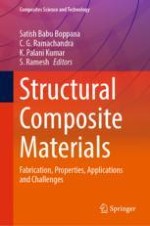This book covers topics related to structural composite materials such as processing, characterization, applications and challenges. The book presents ways of processing composites, where different types of composites can be processed depending on the type of reinforcement and matrix. It also outlines the evaluation of mechanical properties of a few processed composites and discusses the potential applications of composites and machining challenges faced in processing polymer and ceramic composites. The book caters to material scientists, industrial practitioners, researchers and students working on structural composite materials.
